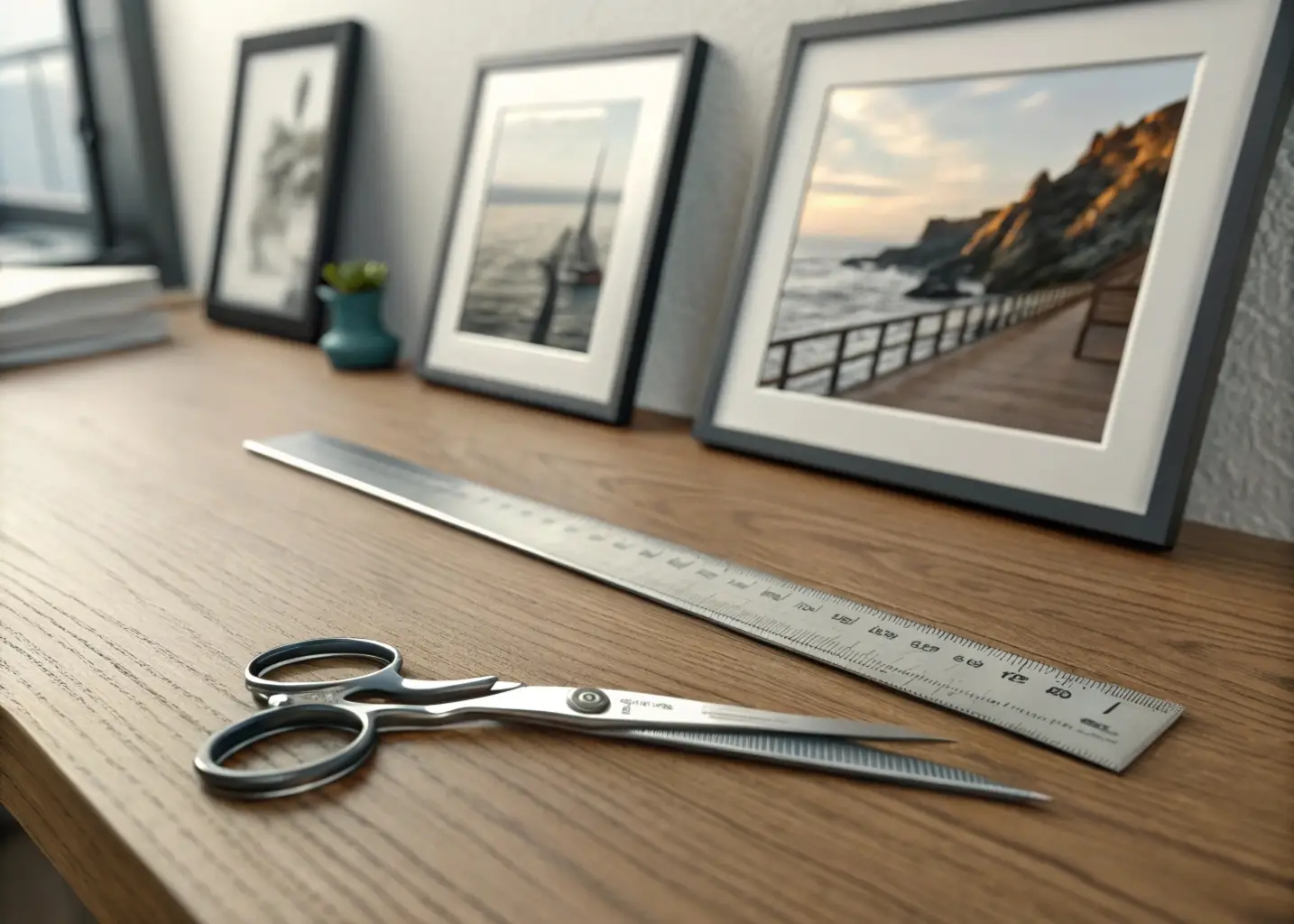
Aspect Ratios Explained: Finding the Perfect Fit for Your Images
Discover everything you need to know about Aspect Ratio for your photos and videos. I'll guide you through common formats and help you pick the perfect dimensions.

Ever felt lost when trying to size your photos for different platforms? I know I have. The world of aspect ratios can seem like a maze, but don’t worry. I’m here to guide you through it. Let’s break down this crucial concept in image composition and digital imaging, making it easy to understand and apply.
Aspect ratio is simply the relationship between an image’s width and height. It’s the key to ensuring your photos look great whether they’re on a billboard or your Instagram feed. To make this process easier, you can use our aspect ratio calculator to quickly find the perfect dimensions for any platform. By mastering aspect ratios, you’ll improve your photo sizing skills and create more visually appealing content.
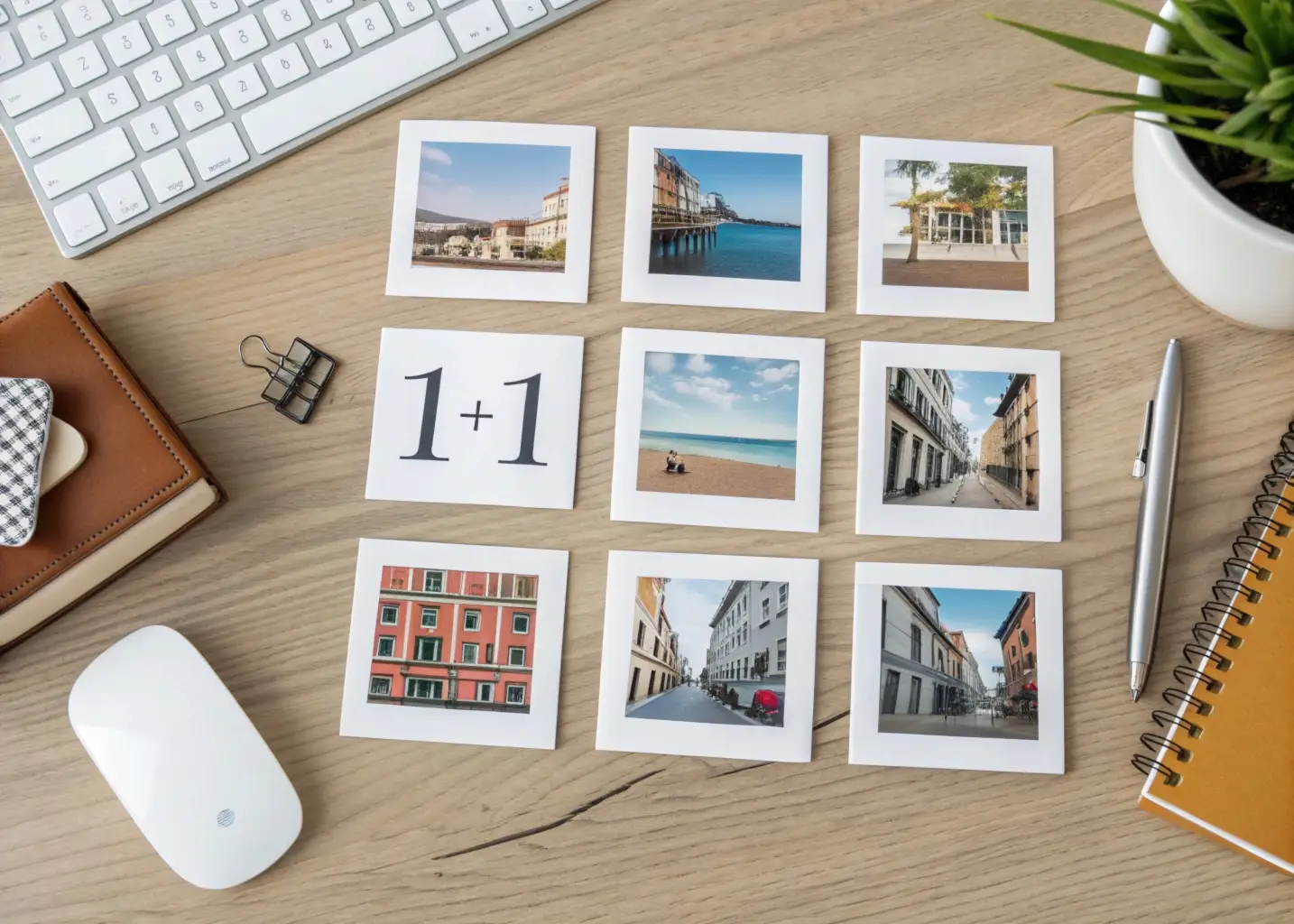
Did you know that the most common aspect ratios for images are 1:1, 3:2, and 5:4? Each serves a specific purpose. For instance, the 1:1 ratio is perfect for print photographs and many social media platforms. Understanding these ratios will help you choose the right format for your needs.
In the digital world, aspect ratios play a huge role. The standard 16:9 ratio is ideal for presentation slides and widescreen TVs. For social media stories, the 9:16 ratio is king. Knowing these details can make a big difference in how your images are displayed and perceived.
Key Takeaways
- Aspect ratio is the width-to-height relationship of an image
- Common ratios include 1:1, 3:2, and 16:9
- Different platforms and mediums require specific aspect ratios
- Understanding aspect ratios improves image composition
- Proper sizing enhances visual appeal across various devices
Understanding Aspect Ratio: The Foundation of Image Composition
Aspect ratio is key in image composition. It can make or break a photo. Let’s explore what aspect ratio is and why it matters in digital media.
What Makes Up an Aspect Ratio
An aspect ratio shows the width to height of an image. It’s written as two numbers, like 16:9 or 4:3. These numbers affect how your image looks. For print-ready images, both aspect ratio and resolution play crucial roles in the final quality.
The Mathematical Relationship Between Width and Height
Aspect ratio math is simple. For example, 3:2 means the width is 1.5 times the height. This ratio is used in DSLRs and was popular in 35mm film. Knowing these ratios helps when resizing images.
Why Aspect Ratios Matter in Digital Media
In today’s digital world, aspect ratios are crucial. They ensure images look right on all devices. For example, Instagram likes 1:1 and 4:5 ratios, while Facebook supports more, like 16:9 and 9:16. Picking the right ratio can make your images more engaging on different platforms.
| Device/Platform | Common Aspect Ratios | Use Case |
|---|---|---|
| DSLR Cameras | 3:2, 4:3 | Professional photography |
| Smartphones | 4:3, 16:9 | Casual photography, social media |
| 1:1, 4:5 | Social media posts, stories | |
| 16:9, 4:3, 9:16 | Cover photos, feed posts | |
| Websites | 16:9 | Header images, blog posts |
Common Aspect Ratios in Photography and Digital Imaging
In the world of digital imaging, knowing aspect ratios is key. It helps make content look great. I’ve learned that understanding these ratios is essential for optimizing photos for different platforms and sizes.
Standard Photo Print Sizes
When printing photos, some aspect ratios are more common. Here’s a quick guide:
| Aspect Ratio | Common Print Size | Usage |
|---|---|---|
| 3:2 | 4x6 inches | Standard prints, DSLR cameras |
| 4:3 | 6x8 inches | Digital cameras, mobile phones |
| 16:9 | 8x14 inches | Widescreen displays, cinematic look |
Digital Camera Sensor Formats
Different cameras have unique sensor formats and aspect ratios. Full-frame and APS-C sensors use 3:2. Micro Four Thirds cameras use 4:3. These ratios affect how you frame your shots.
Social Media Platform Requirements
Social media image sizes vary. Instagram likes square (1:1) and 4:5 for portraits. Facebook prefers 16:9 for cover photos, and Twitter uses 2:1 for headers. Knowing these helps make content stand out on each platform.
Mastering these aspect ratios has greatly improved my photography and digital imaging. It’s made a big difference in how my work looks on different mediums and platforms.
Print-Perfect: Matching Aspect Ratios for Physical Output
Getting the aspect ratio for printing photos right is crucial. It can make or break your final result. When preparing images for print, I always think about the final output size and adjust accordingly. For detailed guidance on printing with the correct aspect ratios, check out our complete guide to aspect ratios in photo printing.
The best aspect ratio for artwork printing varies based on the display space and the artwork’s composition. Common print ratios include 3:2, 4:3, and 5:4. Matching these ratios is key to avoid unexpected cropping.
A full-frame image from an SLR camera has a 3:2 ratio. This ratio aligns perfectly with many standard print sizes. When cropping photos for printing, I aim for a resolution of 300 pixels per inch (PPI) for high-quality prints viewed up close.
For larger prints viewed from a distance, I can use less than 200 PPI. Here’s a quick reference guide I use:
| Print Size | Minimum PPI | Optimal PPI |
|---|---|---|
| 4x6 inches | 180 | 300 |
| 8x10 inches | 150 | 300 |
| 16x20 inches | 100 | 240 |
Understanding these ratios and resolutions is key to achieving print-perfect results. By matching the aspect ratio to the intended print size, I ensure my photos look their best in physical form.
Aspect Ratio Conversion and Cropping Techniques
Learning about aspect ratio conversion and image cropping is key to making great photos. I’ll share tips on keeping image quality high, useful tools, and mistakes to avoid with different aspect ratios.
Maintaining Image Quality During Resizing
When resizing images, keeping quality is crucial. I use non-destructive editing to protect the original data. This way, I can easily go back to the original if needed.
For prints, I ensure the resolution is right to avoid pixelation. This makes sure the image looks sharp and clear. For more detailed guidance on preparing your images for high-quality prints, check out our guide to optimizing images for printing, which covers the best practices for image optimization.
Tools and Software for Aspect Ratio Conversion
There are many tools for aspect ratio conversion:
- Adobe Photoshop: Offers advanced editing features
- GIMP: A free, open-source alternative
- Canva: User-friendly online platform for quick edits
- Lightroom: Great for batch processing photos
Avoiding Common Cropping Mistakes
Here are some tips for cropping images:
- Don’t cut off important elements
- Use the rule of thirds for balanced compositions
- Pay attention to the focal point
- Shoot with extra space around the subject for flexible cropping later
| Aspect Ratio | Common Use | Example Dimensions |
|---|---|---|
| 16:9 | HD Video | 1920 x 1080 |
| 4:3 | Traditional Photos | 3264 x 2448 |
| 1:1 | Social Media | 1080 x 1080 |
| 3:2 | DSLR Photos | 6000 x 4000 |
Professional Applications: Cinema and Display Standards
In the world of visual media, knowing about cinematic aspect ratios, TV display standards, and digital advertising formats is essential. These standards greatly influence how we watch content on different platforms.
Cinematographic Aspect Ratios
The film industry employs various aspect ratios to craft unique visual experiences. Common ones include 1.85:1 (flat) and 2.40:1 (anamorphic widescreen). These wider formats provide the expansive, cinematic feel we all adore.
Television and Streaming Platform Standards
TV display standards have evolved significantly. We’ve transitioned from the boxy 4:3 ratio to the widescreen 16:9 format for HD content. This change mirrors the cinematic experience at home. Streaming giants like Netflix and Amazon Prime mostly use 16:9. However, some content features wider ratios for a more immersive experience.
Digital Billboard and Advertising Formats
Digital advertising formats are diverse. Digital billboards often employ non-standard ratios like 4:1 or 6:1 to grab attention. These unique formats enable advertisers to create eye-catching visual content that stands out in urban settings.
| Medium | Common Aspect Ratios |
|---|---|
| Cinema | 1.85:1, 2.40:1 |
| TV/Streaming | 16:9 |
| Digital Billboards | 4:1, 6:1 |
Grasping these professional standards is vital for content creators and advertisers. It ensures their work is displayed correctly across various media, from the big screen to your smartphone.
Mobile and Web Design Considerations
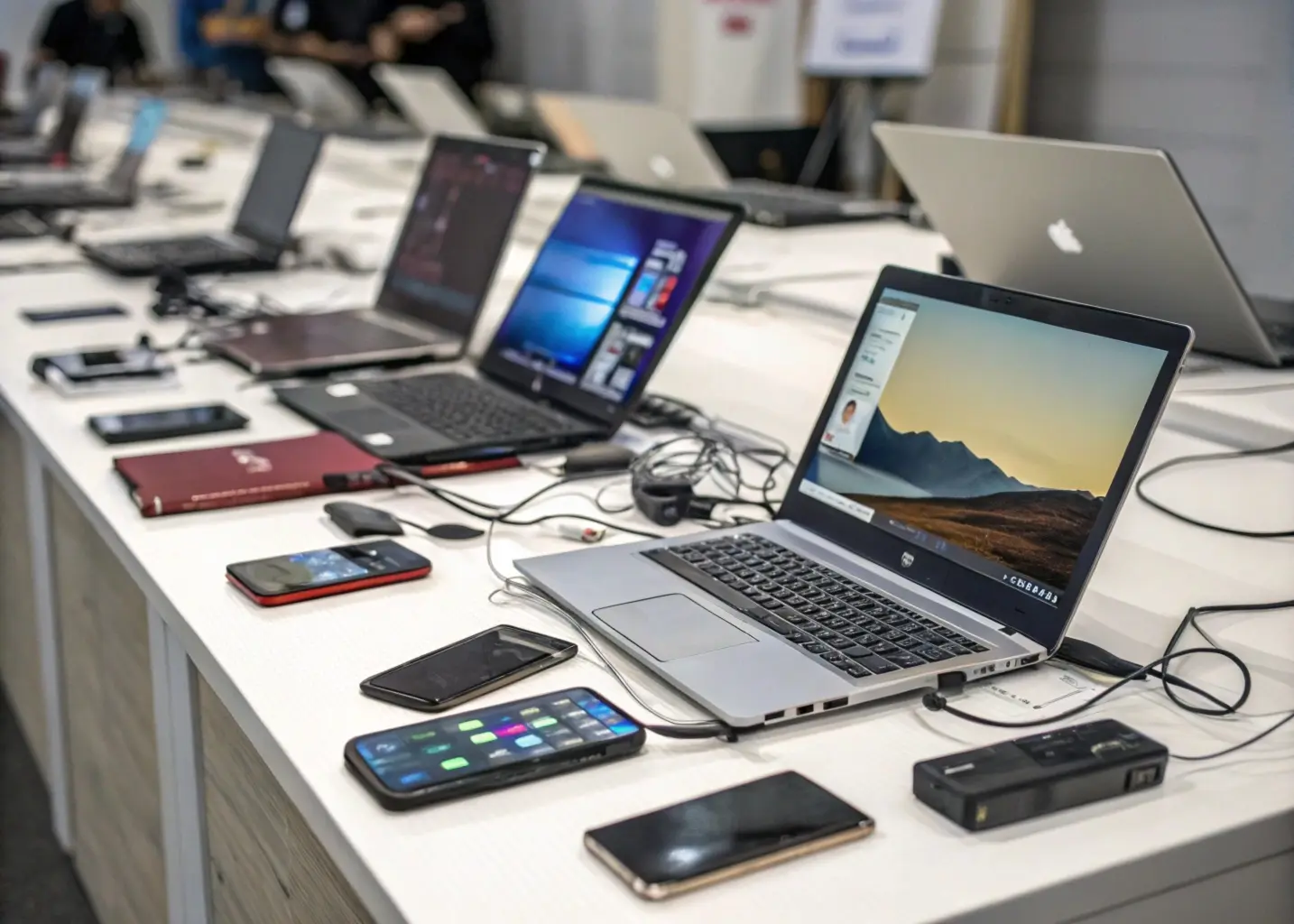
In today’s digital world, responsive web design is key. Over 60% of web traffic comes from mobile devices. So, it’s vital to make our designs mobile-friendly.
I often use common aspect ratios in my web projects. For example, 1:1 for square images, 3:2 for rectangles, and 16:9 for widescreen content. These ratios keep our designs looking good on all screens. Logos usually fit well in a 3:2 aspect ratio.
Optimizing web images is crucial for a good user experience. I use CSS properties like aspect-ratio to make images look right on different devices. This method saves time and boosts performance, especially on high-resolution screens.
To get the best results, I test my designs on many devices. This helps me find and fix any issues with aspect ratios or image display. By focusing on responsive design and image optimization, I make websites that look and work great on any device.
| Aspect Ratio | Common Use | Benefits |
|---|---|---|
| 1:1 | Square images | Versatile, works well on social media |
| 3:2 | Rectangular images, logos | Balanced, suits most website layouts |
| 16:9 | Widescreen content | Ideal for video and full-width images |
Mastering Aspect Ratios for Perfect Visual Presentation
I’ve looked into aspect ratios and found they’re vital for making visual content pop. From the classic 4:3 to the modern 16:9, each has its own role. The 3:2 ratio, inspired by 35mm film, is still loved in digital photography. Meanwhile, the square 1:1 format is a hit on social media, especially on Instagram.
Knowing the best practices for aspect ratios is essential for creators. It’s not just about fitting images; it’s about keeping the essence of your work intact. Whether in galleries or on digital platforms, picking the right ratio is crucial. This guide has shown that ratios like 9:16 are great for mobile content, while 16:9 is perfect for widescreen TVs and YouTube.
Impact of Resolution on Print Quality
High resolution leads to stunning prints. It’s about keeping details sharp during printing. Low-res images, often from websites (72-100 DPI), can be a letdown when printed. That’s why optimizing graphics and fine-tuning images are crucial. For instance, learning how to optimize images for printing can greatly improve the quality of your prints. You can’t just make a low-res image high-res. It’s like trying to stretch a small pizza to make it bigger - you’ll lose the toppings! So, always start with high-quality images for the best results.
Related Articles
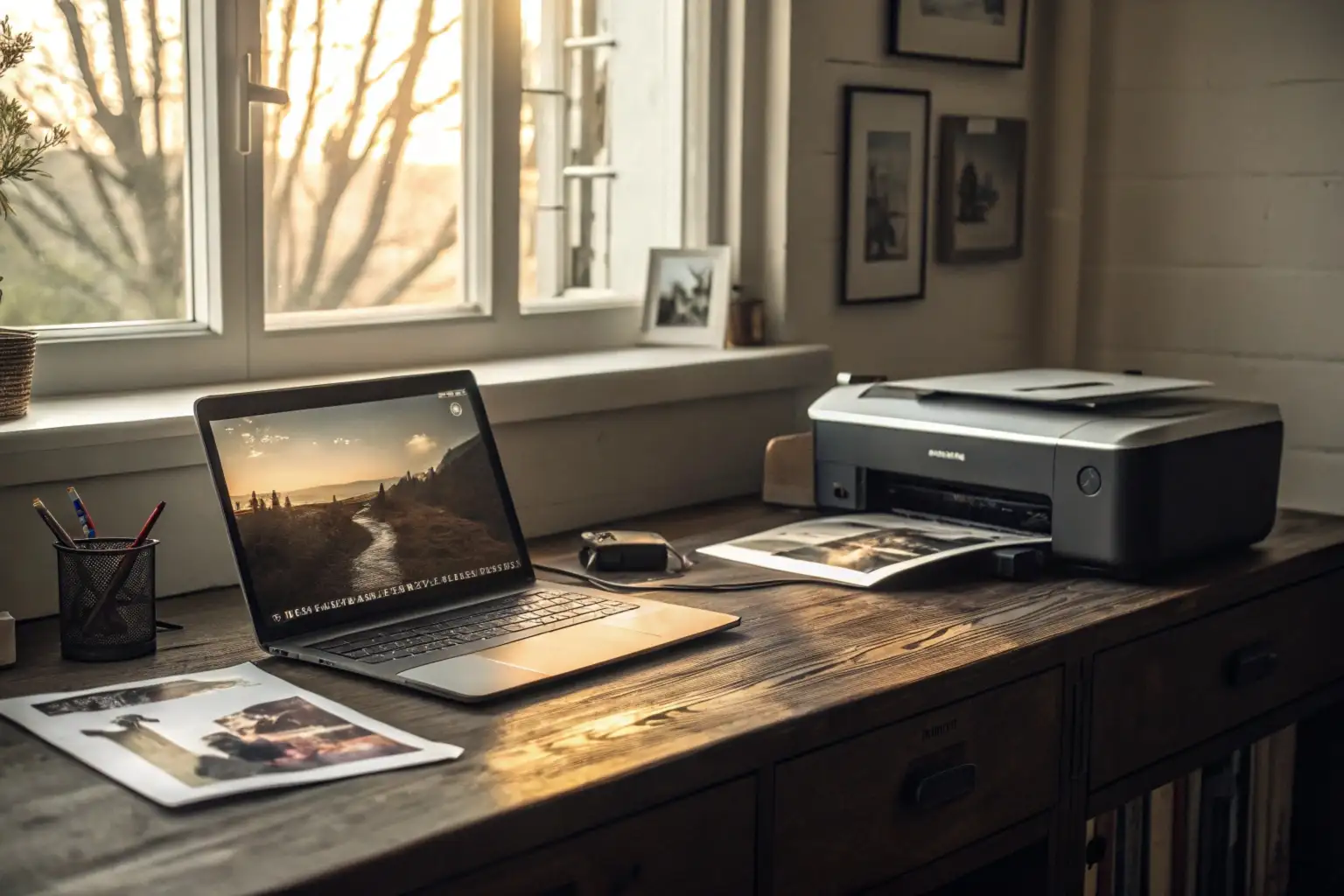
How to Optimize Images for Print: The Most Important Things to Know
Ever wondered why your digital images look blurry or pixelated when printed? It's all about print resolution. We'll go through how to make your images look great on any paper, just like they do on screen.
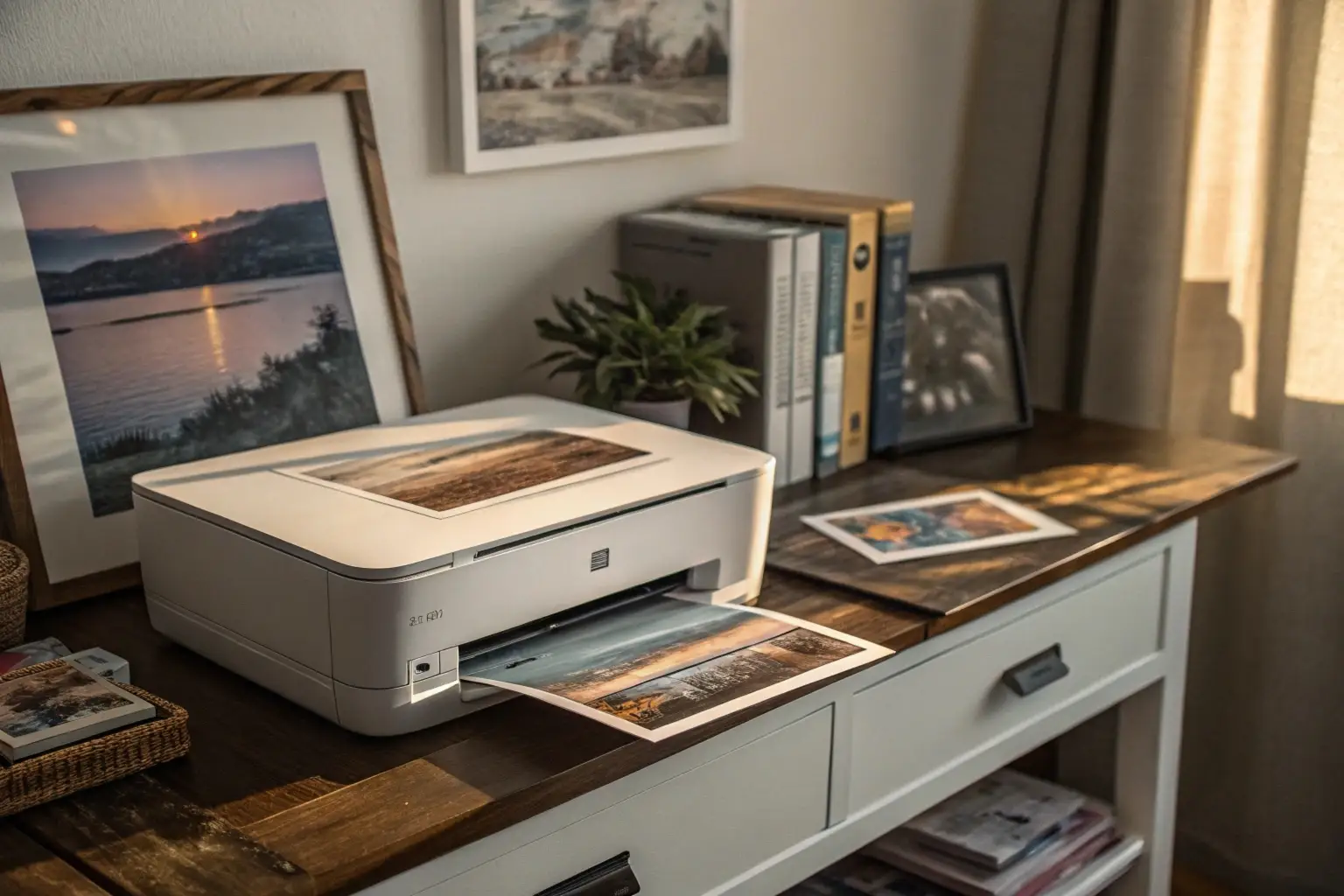
Aspect Ratios Decoded: What You Need to Know Before Hitting Print
Discover the crucial aspects of aspect ratios for printing. Learn how to avoid common mistakes and ensure your designs look perfect on paper with our comprehensive guide.

Aspect Ratios Explained: Finding the Perfect Fit for Your Images
Discover everything you need to know about Aspect Ratio for your photos and videos. I'll guide you through common formats and help you pick the perfect dimensions.